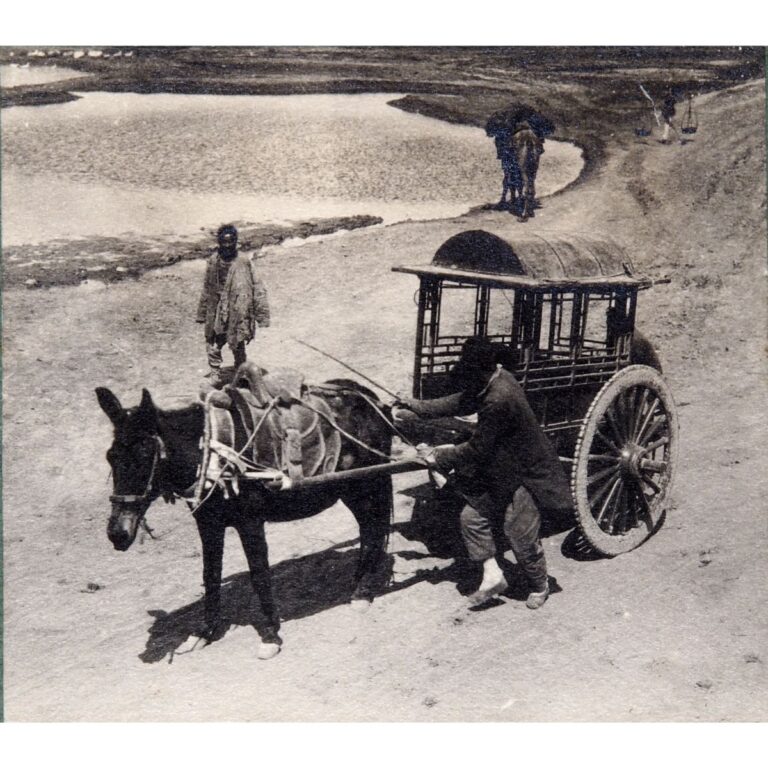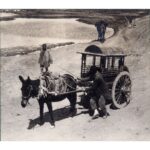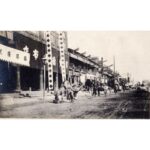Photography Beijing Single Carriage
A black-and-white photograph showing a farmer leading a donkey harnessed to a traditional one-wheeled cart through Beijing. The sides of the cart are made of the traditional lattice work also used for doors, windows, and fences. The basic structure, dating back to 1200 B.C., is a classic square chariot with a wheel on each side. The square and circle motif is widely used in Chinese culture, as it symbolises the whole world, which consists of heaven (circle) and earth (square). One of the most famous uses of this motif in China is for coins.
For many centuries, Chinese civilization was “driven” by donkeys, mules, horses, cows, oxen, and people. Among the most common subjects of early photographers in China were the various means of transportation, including the two-wheeled carts or carriages of Beijing, which were more comfortable than one-wheeled wheelbarrows, but less comfortable than sedan chairs.
The photograph is the 127th of 449 photographs of Beijing ... more
A black-and-white photograph showing a farmer leading a donkey harnessed to a traditional one-wheeled cart through Beijing. The sides of the cart are made of the traditional lattice work also used for doors, windows, and fences. The basic structure, dating back to 1200 B.C., is a classic square chariot with a wheel on each side. The square and circle motif is widely used in Chinese culture, as it symbolises the whole world, which consists of heaven (circle) and earth (square). One of the most famous uses of this motif in China is for coins.
For many centuries, Chinese civilization was “driven” by donkeys, mules, horses, cows, oxen, and people. Among the most common subjects of early photographers in China were the various means of transportation, including the two-wheeled carts or carriages of Beijing, which were more comfortable than one-wheeled wheelbarrows, but less comfortable than sedan chairs.
The photograph is the 127th of 449 photographs of Beijing and its surroundings in the album of Ivan Skušek Jr., purchased during his stay in Beijing (1914–1920). In the handwritten inventory of the album, the photograph is referred to as Beijinger “Einspänner”. (DZ, MV)



































Do you have a comment or additional information about the subject?